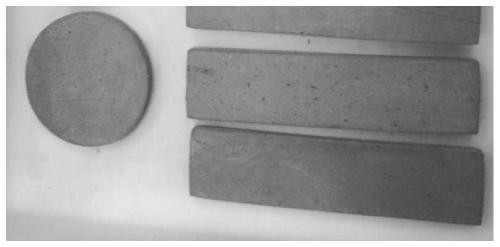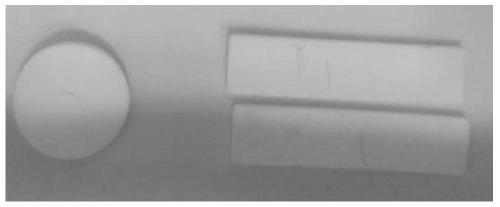Rapid degreasing and sintering method for photocuring shaped ceramic body
A technology of photocuring molding and ceramic body, applied in the field of additive manufacturing, can solve the problem of long process and achieve the effect of improving mechanical properties
- Summary
- Abstract
- Description
- Claims
- Application Information
AI Technical Summary
Problems solved by technology
Method used
Image
Examples
Embodiment 1
[0030] A method for rapid degreasing and sintering of a light-cured and molded ceramic green body, the steps are as follows:
[0031] (1) Vacuum degreasing: Place the alumina ceramic cuboid body on the alumina ceramic platform and transfer it to a vacuum furnace. -3 ~5×10 -1 Under the vacuum condition of Pa, with a heating rate of 1°C / min and 1h every time the temperature reaches the hundredth place during the heating process (that is, when the temperature is raised to 100°C, 200°C, 300°C, 400°C, and 500°C, keep the temperature for 1h respectively) Keep warm, raise the temperature to 600°C and keep warm for 1h;
[0032](2) Air oxidation carbon removal: when the vacuum furnace in step (1) is naturally cooled to 350 ° C, the vacuum pump is turned off and kept at this temperature for 2 hours. Air is introduced into the vacuum furnace at a rate of min so that the volume fraction of oxygen in the vacuum furnace is within the range of 15-20%;
[0033] (3) Vacuum sintering: After ...
PUM
| Property | Measurement | Unit |
|---|---|---|
| density | aaaaa | aaaaa |
| bending strength | aaaaa | aaaaa |
Abstract
Description
Claims
Application Information
 Login to View More
Login to View More - R&D
- Intellectual Property
- Life Sciences
- Materials
- Tech Scout
- Unparalleled Data Quality
- Higher Quality Content
- 60% Fewer Hallucinations
Browse by: Latest US Patents, China's latest patents, Technical Efficacy Thesaurus, Application Domain, Technology Topic, Popular Technical Reports.
© 2025 PatSnap. All rights reserved.Legal|Privacy policy|Modern Slavery Act Transparency Statement|Sitemap|About US| Contact US: help@patsnap.com



